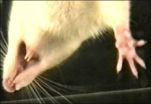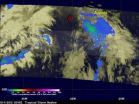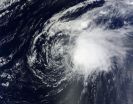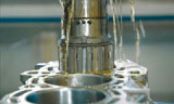(Press-News.org) CHICAGO (October 5, 2012) – Vaccinations for flu, tetanus and other common vaccines are increasingly taking place in non-medical settings such as supermarkets and drug stores. This added responsibility for pharmacists increases the risk of needlestick injuries (NSIs), puncture wounds often suffered while preparing or after use of a needle. NSIs can transmit bloodborne pathogens, including hepatitis C and HIV, from an infected patient to the person administering the vaccine.
A new report published in the November issue of Infection Control and Hospital Epidemiology, the journal of the Society for Healthcare Epidemiology of America, found 33 NSIs occurred at 31 difference pharmacy locations of a nationwide retail pharmacy chain over an 11-year period. Over the same period of time, the chain administered more than 2 million vaccinations. Researchers calculated that the annual incidence of NSIs ranged from 0 to 3.62 per 100,000 vaccinations and 0 to 5.65 NSIs per 1,000 immunizing pharmacists. This incidence rate may represent an underestimation of NSIs since past studies have found that NSIs are often underreported by healthcare workers.
Most often NSIs were reported to have occurred after use and before disposal of the needle (58% of incidents) and during peak influenza vaccination months (79%).
"Pharmacists have become an emerging occupational group at risk of needlestick injuries," said Marie de Perio, MD, medical officer in the National Institute for Occupational Safety and Health at the Centers for Disease Control and Prevention (CDC). "While the incidence of needlestick injuries among employees at this retail pharmacy chain appears to be lower than that found in hospital settings, most of the injuries that did occur were likely preventable by following safe work practices."
Researchers recommend that the company continue to follow existing CDC guidelines to improve its NSI prevention program and add additional information to track the circumstances of the injury to help determine contributing factors.
###
Marie A. de Perio, MD; "Needlestick Injuries among Employees at a Nationwide Retail Pharmacy Chain, 2000." Infection Control and Hospital Epidemiology 33:11 (November 2012).
Published through a partnership between the Society for Healthcare Epidemiology of America and The University of Chicago Press, Infection Control and Hospital Epidemiology provides original, peer-reviewed scientific articles for anyone involved with an infection control or epidemiology program in a hospital or healthcare facility. ICHE is ranked 15 out of 140 journals in its discipline in the latest Journal Citation Reports from Thomson Reuters.
SHEA is a professional society representing more than 2,000 physicians and other healthcare professionals around the world with expertise in healthcare epidemiology and infection prevention and control. SHEA's mission is to prevent and control healthcare-associated infections and advance the field of healthcare epidemiology. The society leads this field by promoting science and research and providing high-quality education and training in epidemiologic methods and prevention strategies. SHEA upholds the value and critical contributions of healthcare epidemiology to improving patient care and healthcare worker safety in all healthcare settings. Visit SHEA online at www.shea-online.org, www.facebook.com/SHEApreventingHAIs and @SHEA_Epi.
Low incidence of needlestick injuries among staff at national pharmacy chain
2012-10-05
ELSE PRESS RELEASES FROM THIS DATE:
Genotyping helps identify source of clinic infection outbreak
2012-10-05
CHICAGO (October 5, 2012) – Researchers from East Carolina University used a new technique of genotyping to identify the source of a hematology clinic outbreak of Mycobacterium mucogenicum, a gram-positive, acid-fast bacteria found in tap water. This is the first outbreak of M. mucogenicum in an ambulatory care setting; five other outbreaks have been reported in hospital settings since 1995. The study was published in the November issue of Infection Control and Hospital Epidemiology, the journal of the Society for Healthcare Epidemiology of America.
Using repetitive ...
MIT Research: What number is halfway between 1 and 9? Is it 5 -- or 3?
2012-10-05
CAMBRIDGE, Mass. — Ask adults from the industrialized world what number is halfway between 1 and 9, and most will say 5. But pose the same question to small children, or people living in some traditional societies, and they're likely to answer 3.
Cognitive scientists theorize that that's because it's actually more natural for humans to think logarithmically than linearly: 30 is 1, and 32 is 9, so logarithmically, the number halfway between them is 31, or 3. Neural circuits seem to bear out that theory. For instance, psychological experiments suggest that multiplying the ...
How will smart cars affect the future of driving?
2012-10-05
California, Nevada, and Florida have already made driverless cars street-legal, and continuing advances in the technology have led many to predict that the commercialization of automated vehicles is a real possibility in the not-so-distant future. As driverless vehicles become more commonplace, it is important to understand how humans interact with this new technology. The Human Factors special issue on automation, featuring the latest articles on designing automated vehicles with the driver in mind, is now available online. The October 2012 issue may be found at http://hfs.sagepub.com/content/current. ...
'Disgusted' rats teaching scientists about nausea, work may lead to new cancer treatments
2012-10-05
Nausea is a common and distressing side effect of many drugs and treatments. Unlike vomiting, nausea is not well understood, but new research by University of Guelph scientists may soon change that.
Guelph PhD student Katharine Tuerke, neuroscience researcher Cheryl Limebeer and Prof. Linda Parker in the Department of Psychology believe they've found the mechanism in the brain that is responsible for the sensation of nausea – with the help of some "disgusted" rats.
Their study was published this week in Journal of Neuroscience.
"Although everyone has experienced ...
Tree nut research may unexpectedly lead to medical advances
2012-10-05
This press release is available in Spanish.
Prescription drugs that today help patients fight severe fungal infections might tomorrow be even more effective, thanks to unexpected findings from agriculture-based, food-safety-focused studies by U.S. Department of Agriculture (USDA) scientists and their colleagues.
Petri-dish experiments conducted by now-retired USDA Agricultural Research Service (ARS) research leader Bruce C. Campbell, ARS molecular biologist Jong H. Kim, and their co-investigators suggest that pairing conventional antifungal medicines with natural, edible ...
NASA notes Nadine now no more
2012-10-05
Twenty-three days after Nadine was born, the tropical cyclone's life came to an end in the northeastern Atlantic Ocean. NASA's TRMM satellite caught a look at the fading Nadine one final time on Oct. 3 before it dissipated.
NASA's Tropical Rainfall Measuring Mission (TRMM) satellite passed above long-lasting Nadine for the last time before the tropical storm's dissipation on October 4, 2012 at 0249 UTC (10:49 p.m. EDT October 3, 2012).
TRMM measures rainfall from space and there was very little remaining in Nadine when it passed overhead. Rainfall data from TRMM's Microwave ...
NASA satellites indicate wind shear taking toll on Oscar
2012-10-05
Satellite data is showing that northwesterly wind shear is taking a toll on Tropical Storm Oscar in the central Atlantic and it is expected to dissipate the storm late on Oct. 5, 2012.
NASA's Aqua satellite passed over Tropical Storm Oscar on Oct. 4 at 1335 UTC (9:35 a.m. EDT) and the Moderate Resolution Imaging Spectroradiometer (MODIS) instrument captured a true-color image of the storm. The imagery showed bulk of Oscar's clouds and showers were southeast of the center of circulation as a result of wind shear.
On Oct. 5 at 5 a.m. EDT, Oscar's maximum sustained winds ...
Scratching the surface: Stanford engineers examine UV effects on skin mechanics
2012-10-05
Reinhold Dauskardt, PhD, of Stanford's Department of Materials Science and Engineering has been studying skin for years. But when he sent his students to look for data on the mechanical properties of skin, they came back empty-handed. A lot was known about skin structure and disease, but few papers actually talked about its mechanical function – its ability to stretch and resist tension without tearing. "That motivated us to get more interested in the skin itself," said Dauskardt.
He and his team, including Ph.D. student Krysta Biniek and postdoctoral researcher Kemal ...
Using less gas and oil to get where you're going
2012-10-05
An engine without oil will not survive for very long. Pistons need plenty of lubricant in order to be able to move within the cylindrical sleeves in the engine block. Two things are known to raise the resultant level of friction. The first is attributed to distortion of the cylindrical bore hole when the cylinder head is attached, which is known as static distortion. The second occurs when the engine is running and temperatures warp the bore hole. The extent of this thermal distortion depends on prevailing engine temperatures and the specific engine model. In reality, the ...
Origin of ultra-fast manipulation of domain walls discovered
2012-10-05
An international team of researchers has found at the free electron laser FLASH a surprising effect that leads in ferromagnetic materials to a spatially varying magnetization manipulation on an ultrafast timescale. This effect could be the key to further miniaturization and performance increase of magnetic data storage devices. From Mainz, the group of Professor Dr. Mathias Kläui from the Institute of Physics at Johannes Gutenberg University Mainz and in particular Felix Büttner, a member of the Graduate School of Excellence "Materials Science in Mainz", were involved. ...



